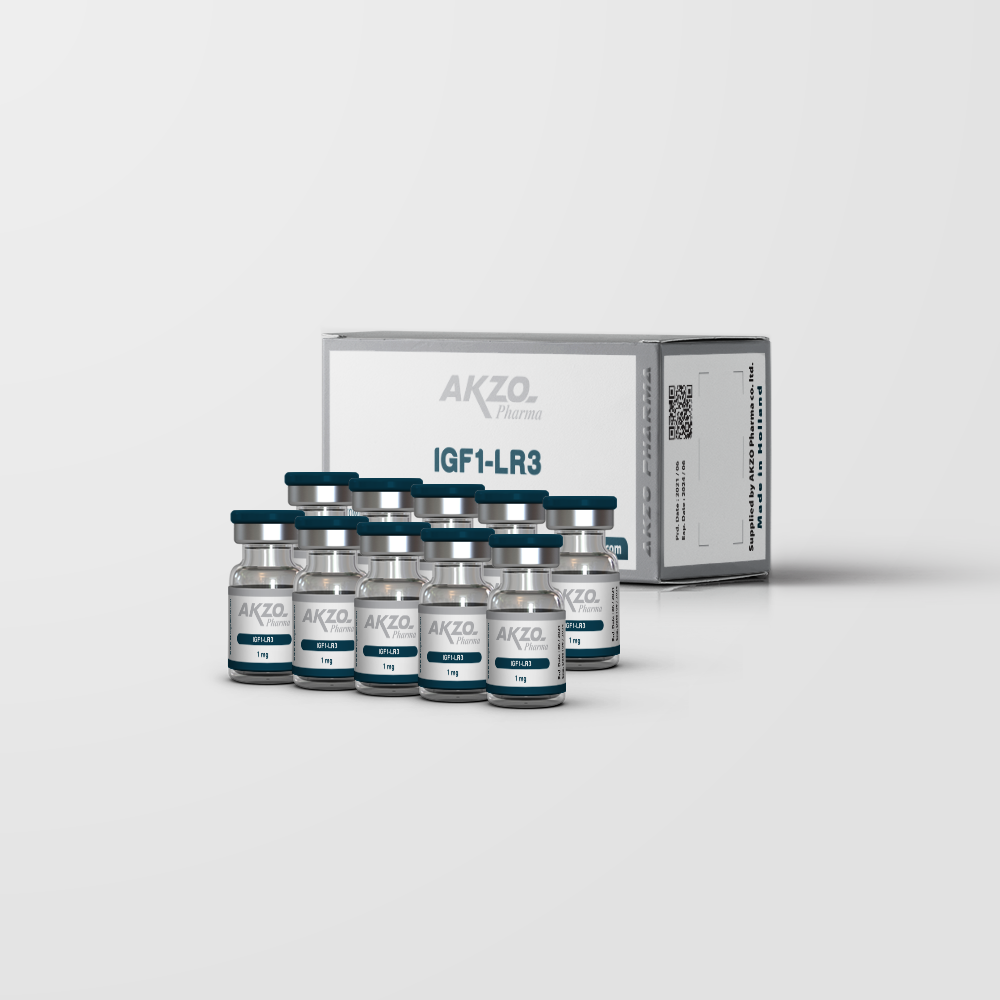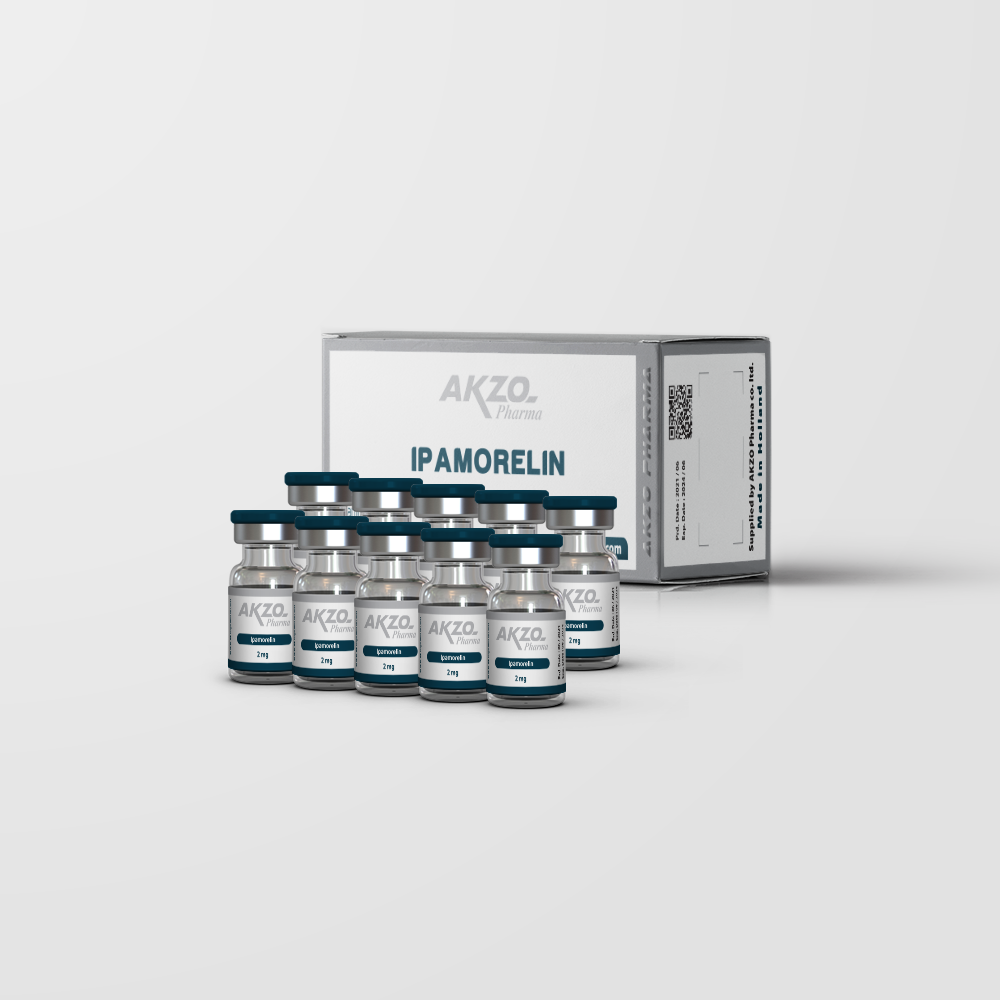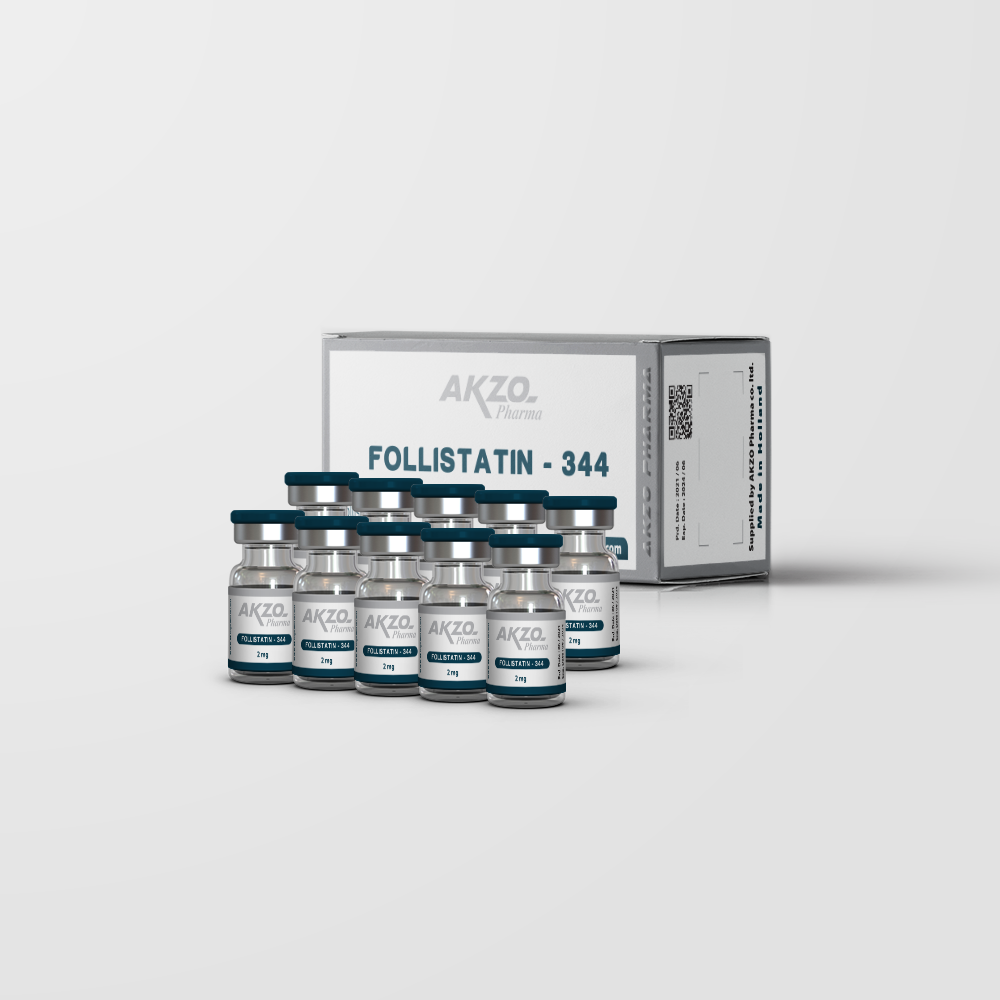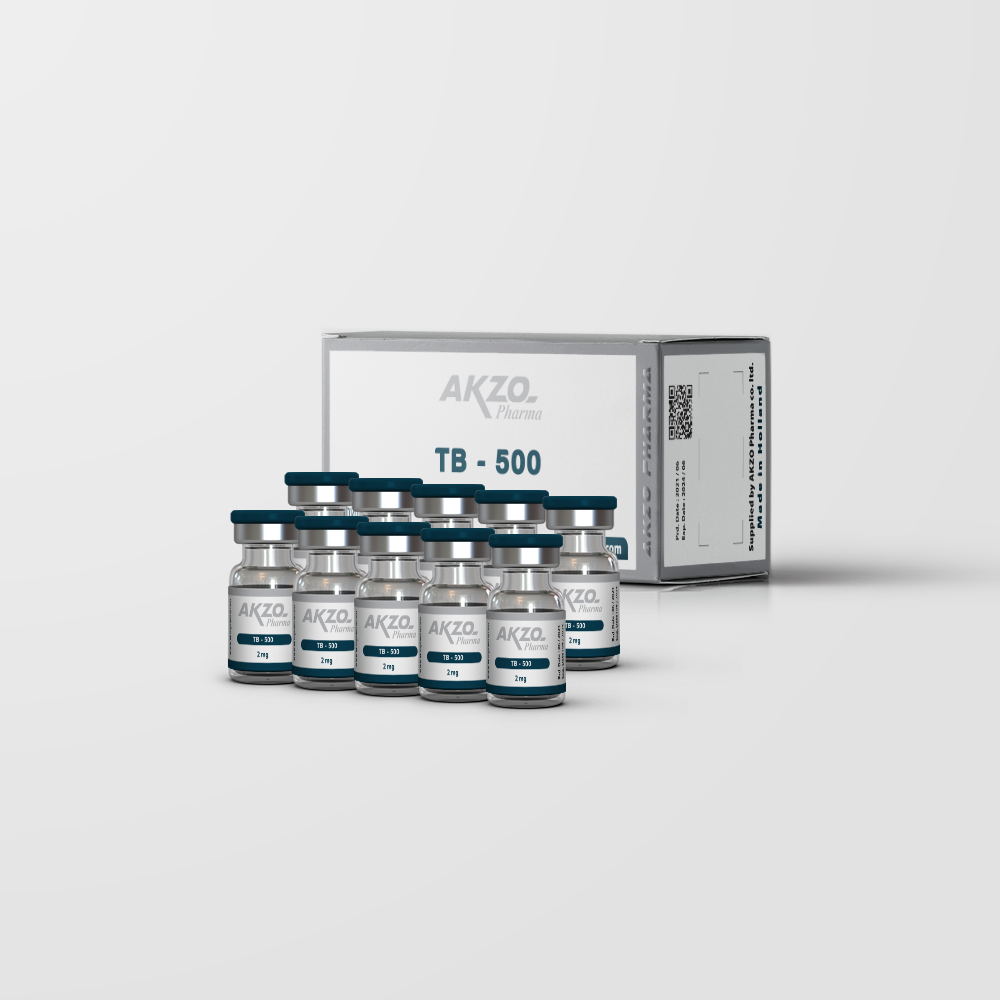IGF - 1LR3
IGF - 1LR3
Recombinant IGF-1 Long R3
- POTENCY: 100 mcg/vial.
- APPEARANCE lyophilized (freeze-dried) white powder.
- PACKING: 10 x 2 mg/vials
- DOSAGE: Dosage 40 mcg – 100 mcg/day.

1.Description
Description Long[R3] insulin-like growth factor-1 (IGF-1 Long[R3]) is a Human Recombinant, single non-glycosylated, polypeptide chain containing 83 amino acids. It is an analog of human IGF-1 comprising the complete human IGF-1 sequence w the substitution of an Arginine (Arg or for the Glutamic Acid (Glu or at position 3 (hence R3), and a 13 amino acid peptide at the N-terminus. Molecular Weight: 9111.6 daltons-confirmed by Mass Spectrometry produced in E. coli using a patented expression system the IGF-I Long [R3] is correctly folded and purified by several chromatography
steps to yield Receptor Grade IGF-1 Long[R3]
IGF-1 L[R3] is a sterile, non-pyrogenic, white lyophilized powder intended for subcutaneous or intramuscular injection, after reconstitution with sterile Water for Injection (0,3% m-Cresol).
2. Mechanism of Action
This analog has been engineered with the express purpose of increasing biological activity. IGF-1 Long[R3] is significantly more potent than IGF-1 in vitro and in vivo. The enhanced potency is due to the markedly decreased binding of IGF-1
Long[R3] to all IGF binding proteins. These binding proteins normally inhibit the biological actions of IGFs.
IGF-1 stands for insulin-like growth factor. It is a natural substance that is produced in the human body and is at its
highest natural levels during puberty. During puberty IGF-1 is the most responsible for the natural muscle growth that
occurs during these few years. There are many different things that IGF-1 does in the human body.
Among the effects the most positive are: increased amino acid transport to cells.
• increased glucose transport increased protein synthesis
decrease synthesis.
d protein degradation
increased RNA
When IGF-1 is active it behaves differently in different types of tissues. In muscle cells proteins and associated cell components are stimulated. Protein synthesis is increased along with amino acid absorption. As a source of energy,
IGF-1 mobilizes fat for use as energy in adipose tissue. In lean tissue, IGF-1 prevents insulin from transporting glucose across cell membranes. As a result the cells have to switch to burning off fat as a source of energy. IGF-1 also mimic’s insulin in the human body. It makes muscles more sensitive to insulin’s effects, so if you are a person that currently uses insulin you can lower your dosage by a decent margin to achieve the same effects, and as mentioned IGF-1 will keep the
insulin from making you fat
. Perhaps the most interesting and potent effect IGF-1 has on the human body is its ability to cause hyperplasia, which is an actual splitting of cells. Hyperplasia is significantly different from Hypertrophy. Hypertrophy is simply an increase in the size of muscle cells. After puberty the human body has a set number of muscle cells, and Hypertrophy is to increase. the size of these muscle cells. But IGF-1 is able to cause hyperplasia which actually increases the number of muscle cells present in the tissue. So in a way IGF-1 can actually change your genetic capabilities in termsof muscle tissue and cell count. IGF-1 proliferates and differentiates the number of types of cells present. At a genetic level it has the potential to alter an individuals capacity to build superior muscle density and size.
Regular IGF-1 only has a half-life of about 10-20 minutes in the human body and is quickly destroyed. The most effective IGF analog form of all is IGF-1 L[R3]. Because of its chemical alteration and the amino acid changes, IGF-1 L[R3] can avoid binding to proteins in the human body and so to have a much longer half life, around 20-30 hours.
Although IGF-1 is a very powerful muscle builder and fat burner, It is considered IGF-1 L[R3]to be 2-3 times
effective.
3. Adverse reactions
This list presents the most serious and/or most frequently observed adverse reactions using IGF-1 or its analogs:
more
• Users can feel drained and tired all day. This seems to be one of the negative side effects to IGF-1, it will make you
sleep longer and you will require more sleep at night to feel rested for the morning. This also common with high
doses of HGH and exhibited in children, whose IGF-1 levels are extraordinarily high. A child usually needs 4 hours
more sleep than an adult on average does. This may be directly or indirectly related to IGF-1 levels.
• IGF-1 may cause your hands, fingers and knuckles to ache. An almost arthritic feeling can be associated with IGF-1
usage. The same feeling is also commonly associated with high levels of Growth Hormone.
• IGF-1 L[R3] used in larger quantity around the 100mcg+ range( see also dosage) may cause headaches, occasional nausea and can contribute to low blood sugar or hypoglycaemia. IGF-1 by nature has a half-life of less than 10 minutes by its self. The molecule was so small it would escape the blood.
4. Interaction with Insulin
stream very rapidly. IGFBP3 is the binding protein, which allows IGF-1 to remain active in the system for a long enough
period of time to really work its best. By binding IGF-1 to the IGFBP3 the molecule becomes larger and it gets trapped in the blood stream until the protein is broken down and the IGF-1 molecule escapes( in around 10 min). If insulin is also present, prevents the breakdown of IGFBP3 and leaves the IGF-1 molecule roaming free in the blood
stream for longer periods of time up to 12 hours. As insulin levels return to normal, IGFBP3 will begin to break down
and the IGF-1 will escape from its bound protein IGFBP3 again having a half life of less than 10 minutes.
IGF-1 increases insulin sensitivity and this might cause a pro-insulin effect on blood sugar balance. It can enhance the chances of a hypoglycemic episode ten fold.
It is highly recommend not to use Insulin and IGF-1 L[R3] at the same time, unless someone is very familiar to both of
them.
5. Instructions for reconstitution
Powder must be dissolved only with the solvent provided. 1. Apply the needle to the syringe .Remove the plastic cover from the vial
2. Break the top of the ampoule containing the solvent. Remove the plastic cover of the needle. Make sure the
needle is well applied to the syringe. Slowly absorb all the solvent.
3. Inject all the solvent to the vial. This will create a 3,33mg/ml solution. To prevent foaming, the solvent should be injected into the vial by aiming the stream of liquid against the glass wall. 4. Following reconstitution, the vial should be swirled with a GENTLE rotary motion until the contents are
completely dissolved. DO NOT SHAKE. The resulting solution should be clear and colorless, without particulate matter.
After reconstitution, the vial contains 1ml liquid with 0,1mg IGF-1 L[R3]. That means 100mcg/ml. For example, one
injection 100mcg, requires 1ml, one injection 80mcg requires 0,8ml, etc.
6. Dosage
IGF-1 L[R3] cycles should be kept to 4-6 weeks with 4-6 weeks off in-between. IGF-1 L[R3] is considerably more powerful than HGH and this should be reflected in dosage. It is recommended a dosage of 50-80 mcg per day. It should be better to take this dosage every day for 4 weeks. This must be followed by a 4 week off. This dosage can be divided in two: one after waking up in the morning and the other before to go to bed at night. Or some prefer to take it all just after the workout., the sooner the better. In any case the dosage must not exceed 100mcg.
The drug used in larger quantity around the 100mcg+ range might cause headaches, occasional nausea and could contribute to low blood sugar or hypoglycaemia.
7. Storage
• This product can be used not more than 3 years from the production date (see box)
• After reconstitution, may be stored for a maximum of 14 days in a refrigerator at 2°C -8°C. • Store vials in an upright position.
• Store in a refrigerator (2°C -8°C). Keep in the outer carton in order to protect from light. • For one month can be stored at room temperature.









